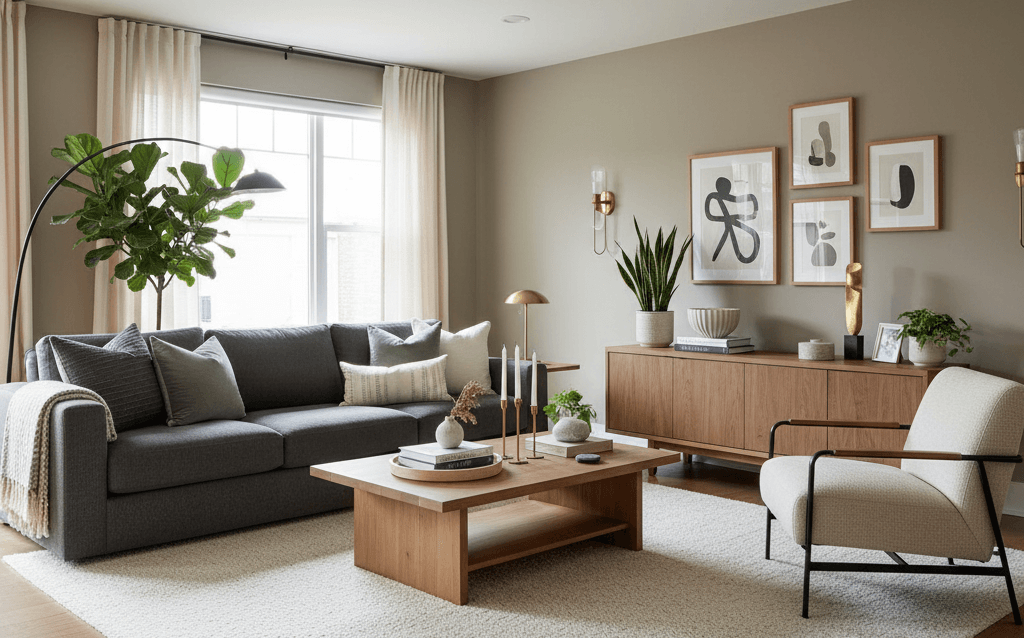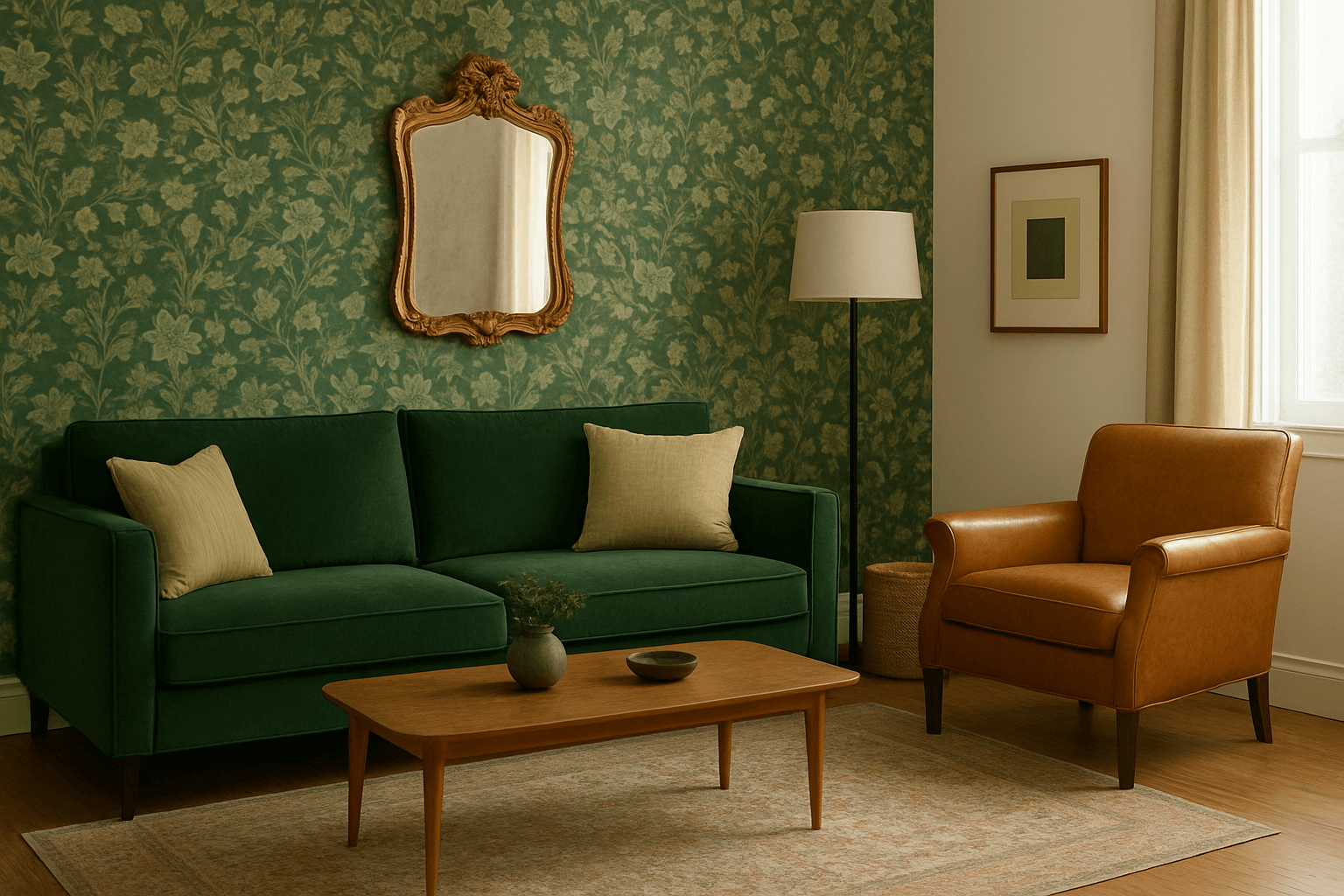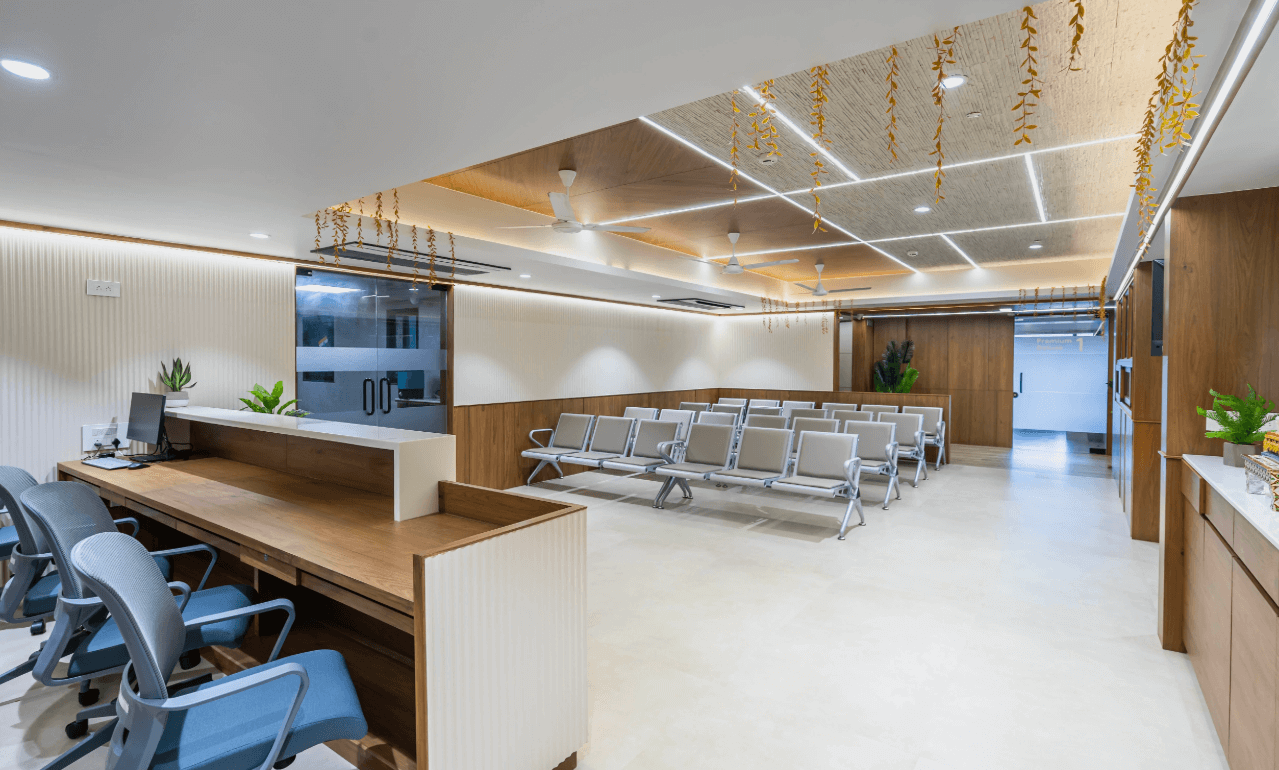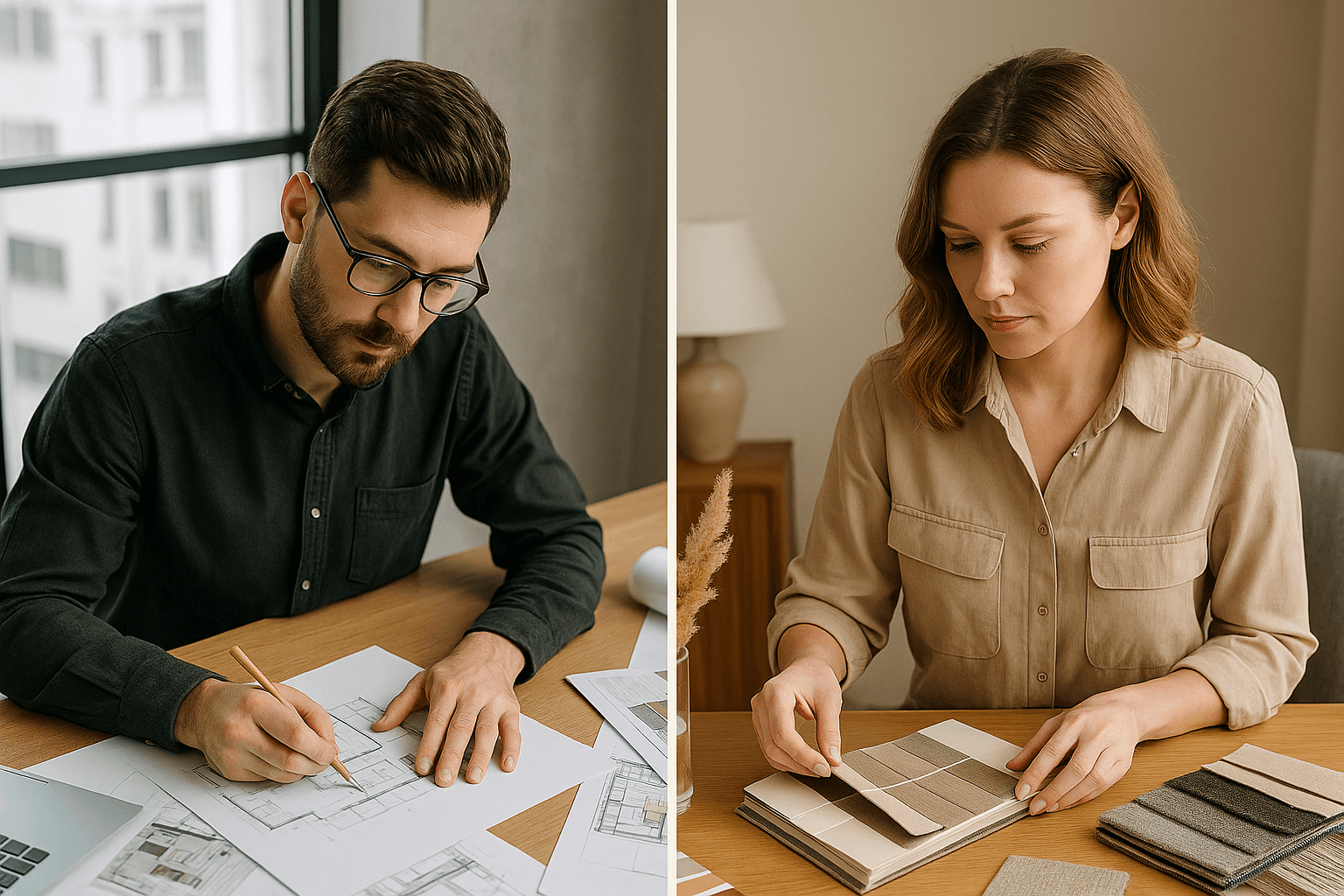Understanding the Difference Between an Interior Designer and an Architect
The primary distinction between an interior designer and an architect lies in their focus areas and expertise. Architects are responsible for creating entire structures, from the initial design concept to the final construction, while interior designers work within these completed structures, transforming existing spaces to reflect their clients’ visions.
Though both professions require a strong creative flair and a commitment to enhancing the lives of others, their roles and responsibilities are quite distinct. Let’s delve deeper into how they differ:
Who is an Architect?
An architect is a trained professional who combines artistry and technical expertise to design and oversee the construction of buildings. Their role involves conceptualizing a structure’s appearance and translating these ideas into detailed plans and blueprints. Architects ensure that these plans meet safety standards, are cost-effective, and serve the intended purpose—whether for residential, commercial, or public use.
Beyond just the visual aspects, architects must also consider the structural integrity, environmental impact, and functionality of the buildings they design. They play a crucial role in ensuring that these spaces are not only visually appealing but also safe and practical for everyday use.
Key Responsibilities of an Architect:
- Building Design and Structure: Architects conceptualize the overall design of a building or structure, considering factors such as functionality, safety, sustainability, and aesthetic appeal.
- Site Planning and Layout: Architects plan how a building will sit on a specific piece of land, ensuring that it fits the environment and complies with zoning laws.
- Structural Integrity: They collaborate with engineers to ensure that the building is structurally sound, from foundations to roofing.
- Building Codes and Regulations: Architects ensure that their designs comply with local laws, regulations, and permits.
- Construction Supervision: Architects often oversee construction to ensure that their plans are followed precisely and that the project runs smoothly.
Architects Focus On:
- The entire building structure (walls, foundations, roof, and layout).
- Exterior design of buildings.
- Planning how spaces are used, including load-bearing walls and circulation areas.
Also, don’t miss our guide on the Best Architects in Ahmedabad for Homes, Offices & Commercial Projects to find the right professional for your next project.
Who is an Interior Designer?
An interior designer is a trained professional who specializes in creating functional, beautiful, and harmonious interior spaces. They combine creativity and technical knowledge to design rooms that enhance the experience of those who use them. Beyond just selecting colors and furniture, interior designers consider how people interact with a space, ensuring it meets the highest standards of health, safety, and welfare.
It’s important to understand that interior design is not the same as interior decorating, even though the terms are often used interchangeably.
- Interior Design involves a comprehensive approach to creating spaces. This includes planning layouts, selecting materials, optimizing spatial flow, and integrating architectural elements. Interior designers can reshape a room entirely by altering walls, floors, lighting, and more to create a functional and visually appealing environment.
- Interior Decorating, on the other hand, focuses on enhancing the aesthetics of a space without changing its structural elements. Decorators choose and arrange furniture, fabrics, colors, and accessories to bring a room’s style to life.
For example:
- An interior decorator might refresh a living room by choosing new curtains, rugs, and artwork.
- An interior designer can reimagine the layout of the space, move walls, and select materials that support both form and function.
To learn more about how these roles differ, check out our detailed guide on Interior Decorator and Interior Designer: What’s the Difference?.
In essence, while interior decorators enhance the visual appeal of a space, interior designers take it a step further—transforming both the structure and the aesthetic to create spaces that truly serve their purpose.
Key Responsibilities of an Interior Designer:
- Interior Space Planning: Interior designers optimize how interior spaces are used. This includes the placement of furniture, fixtures, and accessories to enhance functionality and flow.
- Aesthetic Design: Interior designers create the visual look of a space, selecting color schemes, furniture, textures, lighting, and decor to achieve a specific style or theme.
- Material and Product Selection: They recommend materials, finishes, and furnishings that align with the overall design vision and client preferences.
- Lighting Design: Interior designers select and position lighting to enhance the ambiance and functionality of interior spaces.
- Renovation and Remodeling: Interior designers help update existing spaces, focusing on layout changes, new furniture arrangements, and decorative improvements.
Interior Designers Focus On:
- Interior design and aesthetic transformation.
- Furniture placement, finishes, and decor.
- Lighting, colors, textures, and materials.
Key Differences Between Architects and Interior Designers
| Aspect | Architect | Interior Designer |
|---|---|---|
| Primary Role | Designs the entire structure of a building. | Designs the interior spaces and their aesthetics. |
| Focus Area | Structural integrity, building layout, and overall design. | Functional use of space and visual appeal of interiors. |
| Project Scope | Works on the entire project, from design to execution. | Focuses on interior design, furniture, and decor. |
| Collaboration | Often works with engineers, contractors, and surveyors. | Works with architects, furniture suppliers, and decorators. |
| Licensing/Certification | Requires professional licensing to practice. | Certification may vary; not always licensed. |
| Design Process | Follows architectural principles and building regulations. | Focuses on creating functional and aesthetic interiors. |
If you’re looking for expert recommendations, check out our curated list of the Top 10 Interior Designers in Ahmedabad.
What is Interior Architecture?
Interior architecture is a specialized design discipline that seamlessly blends the principles of architecture and interior design. It focuses on transforming and reimagining interior spaces within a building to make them functional, aesthetically appealing, and aligned with the needs of occupants.
Key Focus Areas
- Space Planning and Functionality: Interior architects reconfigure existing spaces or design new layouts that maximize utility and enhance the flow of movement within a building.
- Structural and Technical Integration: They work hand-in-hand with architects and engineers to ensure that interior spaces comply with building codes, structural requirements, and mechanical systems—such as HVAC, plumbing, and electrical work.
- Compliance and Safety: A critical part of interior architecture involves adhering to building codes, accessibility standards, and health and safety regulations to create spaces that are not only visually striking but also legally compliant and safe for occupants.
The Aesthetic and the Practical
Unlike traditional interior design, which focuses primarily on finishes and decor, interior architecture addresses both the form and function of a space. It considers:
- Material selection for durability and sustainability
- Lighting and acoustics to create comfortable environments
- Structural alterations to open up or reimagine existing layouts
The Integration
Interior architecture bridges the gap between a building’s exterior shell and its interior environment. It ensures that the internal spaces align with the building’s overall structure and design vision.
In short, interior architecture merges technical architectural knowledge with interior design sensibilities to create innovative, livable spaces that are both beautiful and functional.
When Should You Hire an Architect or an Interior Designer?
If you’re starting from scratch with an empty plot of land, it’s essential to call an architect. Architects are skilled at bringing your vision to life by designing the structure of the building. They’ll draft detailed plans to visualize whether you want a single-story house, a multi-story building, or something unique. They’ll also help plan the layout of your home, ensuring that spaces like the living room, kitchen, bedrooms, and bathrooms are thoughtfully designed for functionality and aesthetics. Architects also consider the exterior aspects, like adding a garage, garden, parking area, or a play zone, and work closely with engineers and contractors to ensure everything comes together perfectly.
Once the structure is complete, or if you’re moving into an existing apartment, an interior designer can help you create a home that truly reflects your style and meets your needs. They’ll guide you in choosing the right interior design style, color palette, lighting, and furniture to make the space inviting and functional. Their expertise lies in making every element work together harmoniously, ensuring your interiors align with your personality and lifestyle.
Interior designers excel at transforming existing spaces without needing to make major structural changes. For instance, if you have a small bedroom that feels cramped even with minimal furniture, an interior designer can suggest smart solutions like multifunctional furniture or innovative storage options to maximize the space. If you simply want to refresh your living environment and give it a new look, an interior designer can help you reimagine your decor and create a space that feels brand new.
Key Differences:
- Hire an architect when you’re building a new home or structure from the ground up.
- Hire an interior designer when you want to transform, update, or refresh the interiors of an existing space.
By understanding the roles of both professionals, you can ensure that your project—whether it’s new construction or a home makeover—turns out exactly the way you envisioned.
Why Do Architects and Interior Designers Work Together?
In many large projects, architects and interior designers collaborate closely to ensure a seamless blend of form and function. While the architect focuses on the building’s structural design, the interior designer works to enhance the user experience within the space.
For example:
- In a residential project, an architect may design the layout of the house, while an interior designer will help select furniture, materials, and finishes.
- In a commercial project, the architect will handle the structural design, while the interior designer creates an inviting atmosphere through lighting, furniture, and color schemes.
Conclusion: Architect vs. Interior Designer – Which Do You Need?
When choosing between an architect and an interior designer, consider the scope of your project. For structural design, planning, and building compliance, an architect is your best choice. However, for improving the functionality and aesthetics of your interior spaces, an interior designer is the expert you need.
By understanding the distinct roles of these two professionals, you can make an informed decision and create a space that is both structurally sound and visually appealing.
FAQ
1. What is the main difference between an architect and an interior designer?
An architect focuses on the structure, layout, and construction of a building, while an interior designer works on the inside spaces — improving aesthetics, functionality, and décor.
2. Do I need both an architect and an interior designer for my home?
Yes, for a complete home project, an architect is essential for structural planning, and an interior designer is needed to style the interiors and make the space livable and beautiful.
3. Can an interior designer make structural changes to my home?
No, structural changes should be approved and designed by a licensed architect or civil engineer. Interior designers can suggest layout modifications, but structural changes require architectural input.
4. Who should I hire first — an architect or an interior designer?
If you’re building from scratch or planning major structural changes, hire an architect first. If your structure is ready and you need interiors done, start with an interior designer.
5. Are architects more expensive than interior designers?
Typically, architects charge more due to the scope of their work, which includes structural planning, permits, and construction oversight. Interior design services are usually more budget-friendly and focus on aesthetics.
6. Can an architect do interior design?
Yes, many architects offer interior design as an additional service. However, they may not specialize in styling, furniture, and décor the way interior designers do.
7. How do I know if I need an architect or just an interior designer?
If you’re modifying walls, structure, or floor plans — you need an architect. If you’re changing furniture, lighting, colors, or décor — an interior designer is the right choice.
8. Which is better, interior design or architecture?
Neither is better — they serve different purposes. Architecture is essential for designing the structure of buildings, while interior design focuses on enhancing the look and functionality of interior spaces. The best choice depends on your project needs.
9. Are interior designer and architect the same?
No, an interior designer and an architect are not the same. Architects plan and design buildings, ensuring safety and structure, while interior designers focus on aesthetics, décor, and interior layout.
10. Can an interior designer be called an architect?
No, an interior designer cannot be legally called an architect unless they are licensed in architecture. The title “architect” is protected and requires formal education and licensing.










